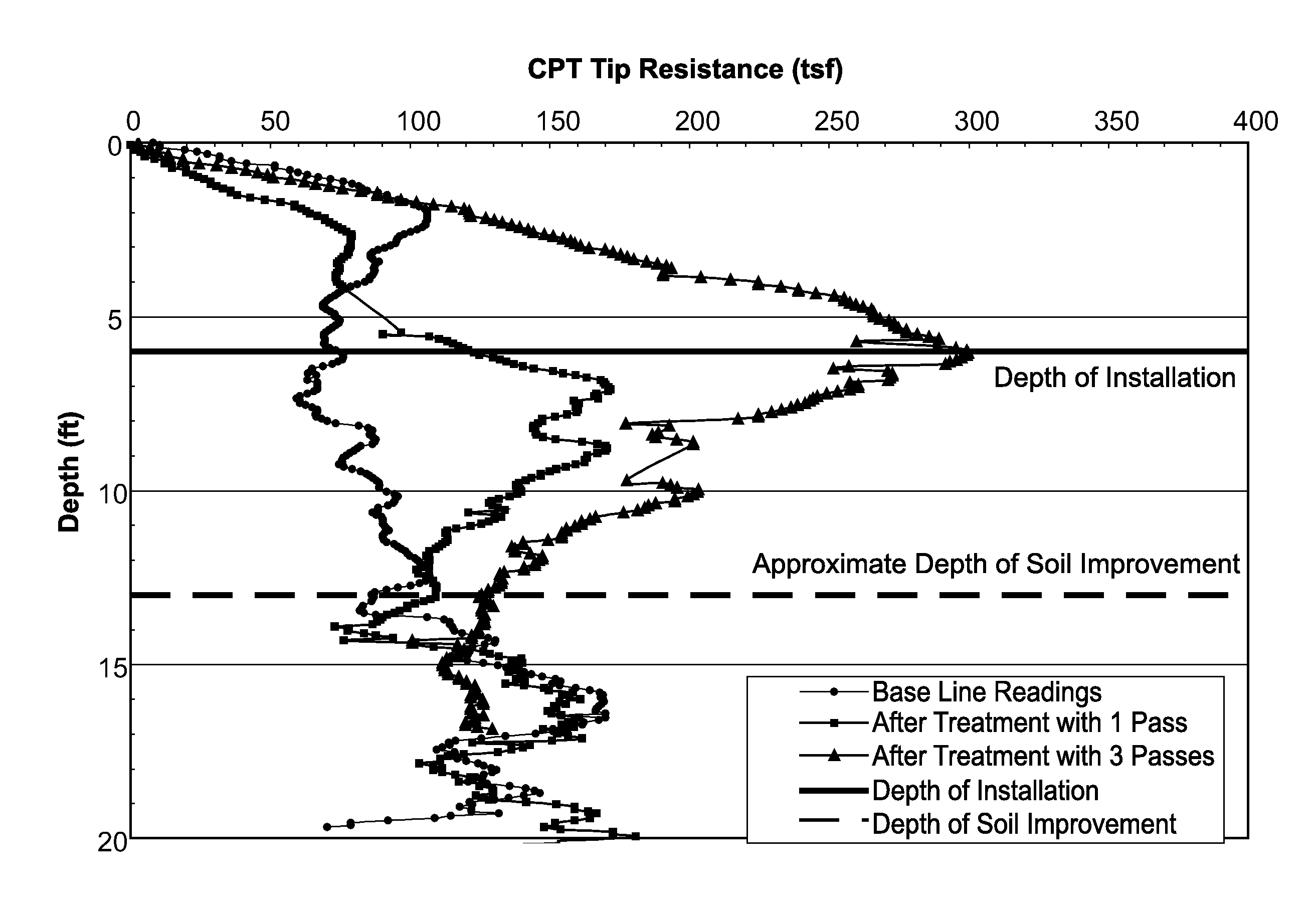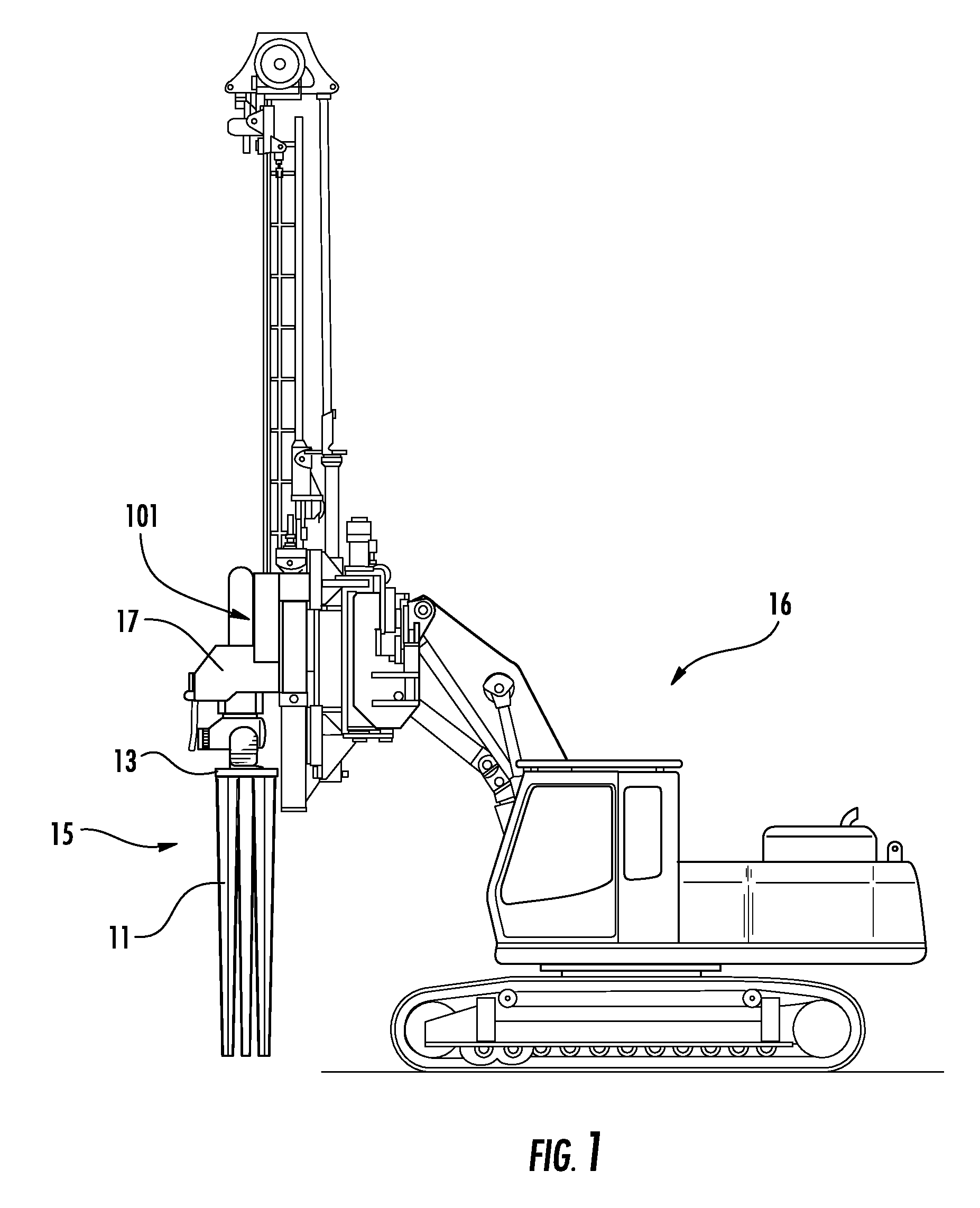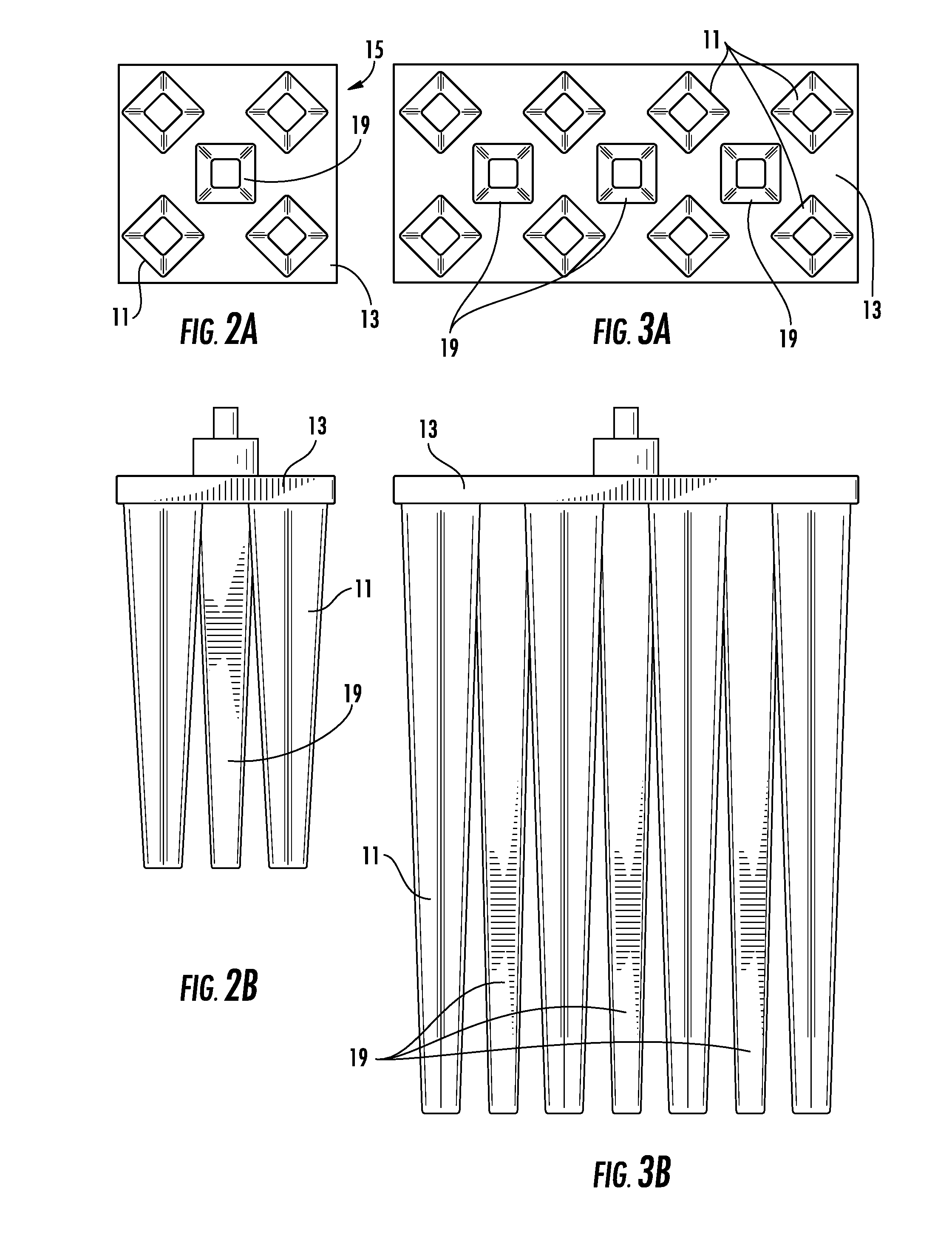Method for Ground Improvement With Hardened Inclusions
a technology of inclusions and ground, applied in the field of ground improvement with inclusions, can solve the problems of large waves, inducing large waves, and expensive dewatering or shoring to stabilize excavation, and achieve the effect of increasing the tip resistance and increasing the tip resistance valu
- Summary
- Abstract
- Description
- Claims
- Application Information
AI Technical Summary
Benefits of technology
Problems solved by technology
Method used
Image
Examples
example i
[0051]In May of 2009, testing was performed using a first embodiment of the invention at an Iowa Test Site. The device was used to stabilize natural sand, natural silty sand, and imported fill sand at the site. The device 15 of the invention was advanced at a total of 36 locations. The device 15 was advanced to a depth of 6 feet in all cases. This testing program was used to evaluate the quantitative improvements using the device 15, in comparison to surface compaction with a vibratory plate applied at the ground surface.
Installations
[0052]The device used in this Example I was fabricated to reflect the features shown in FIGS. 2A and 2B. In accordance with the device shown in the figures, five 6-foot long tines 11 were welded to a top plate 13. The tines 11 were fabricated using a square cross-sectional shape tapered upward from a width of 5 inches at the bottom of the tines, to a width of 8 inches at the top of the tines 11. The tines 11 were welded to a 30-inch square top plate 13....
example ii
[0064]In July of 2009, additional installations and testing were performed at the Iowa Test Site as described in Example I above. An alternate embodiment of the device 15 was advanced at a total of 22 locations, as described below. The device was advanced to a depth of 10 feet in all cases.
Installations
[0065]The embodiment used in this Example II is shown in FIGS. 3A and 3B and is a device having eleven individual tines 11 attached to an approximately 30-inch by 60-inch top plate 13, with eight tines 11 spaced from each other along the periphery of the top plate 13 and three central tines 19 spaced from each other in an interior region of top plate 13. As in the previous example, a grab plate (not shown) was welded to the top plate, allowing use with a vibratory hammer (amongst others). Each of the tines was 10 feet long, with a 4-inch by 4-inch square bottom transitioning to an 8-inch by 8-inch square top where they connected to the top plate 13. The perimeter or periphery tines 11...
example iii
[0073]In November of 2009, additional testing was performed at the Iowa Test Site as described in Example I above. A new embodiment of the invention was advanced at a total of 10 locations, as described below. The device 15 was advanced to a depth of 20 feet in all cases, unless refusal was encountered. The intention of this testing program was to evaluate the quantitative improvements using the new embodiment.
Installations
[0074]The new embodiment in this Example III was a device 15 including eight individual tines 11 attached to an approximately 30-inch by 45-inch top plate 13 as shown in FIGS. 4A and 4B. The individual tines 11 were each 20 feet long, with a 4-inch by 4-inch square bottom transitioning to an 8-inch by 8-inch square top where they connect to the top plate 13. The transition was accomplished approximately half-way up the tine length. A grab plate was welded to the top plate, allowing use with a vibratory hammer.
[0075]For all of the embodiments, the perimeter tines 1...
PUM
| Property | Measurement | Unit |
|---|---|---|
| angle | aaaaa | aaaaa |
| angle | aaaaa | aaaaa |
| length | aaaaa | aaaaa |
Abstract
Description
Claims
Application Information
 Login to View More
Login to View More - R&D
- Intellectual Property
- Life Sciences
- Materials
- Tech Scout
- Unparalleled Data Quality
- Higher Quality Content
- 60% Fewer Hallucinations
Browse by: Latest US Patents, China's latest patents, Technical Efficacy Thesaurus, Application Domain, Technology Topic, Popular Technical Reports.
© 2025 PatSnap. All rights reserved.Legal|Privacy policy|Modern Slavery Act Transparency Statement|Sitemap|About US| Contact US: help@patsnap.com



